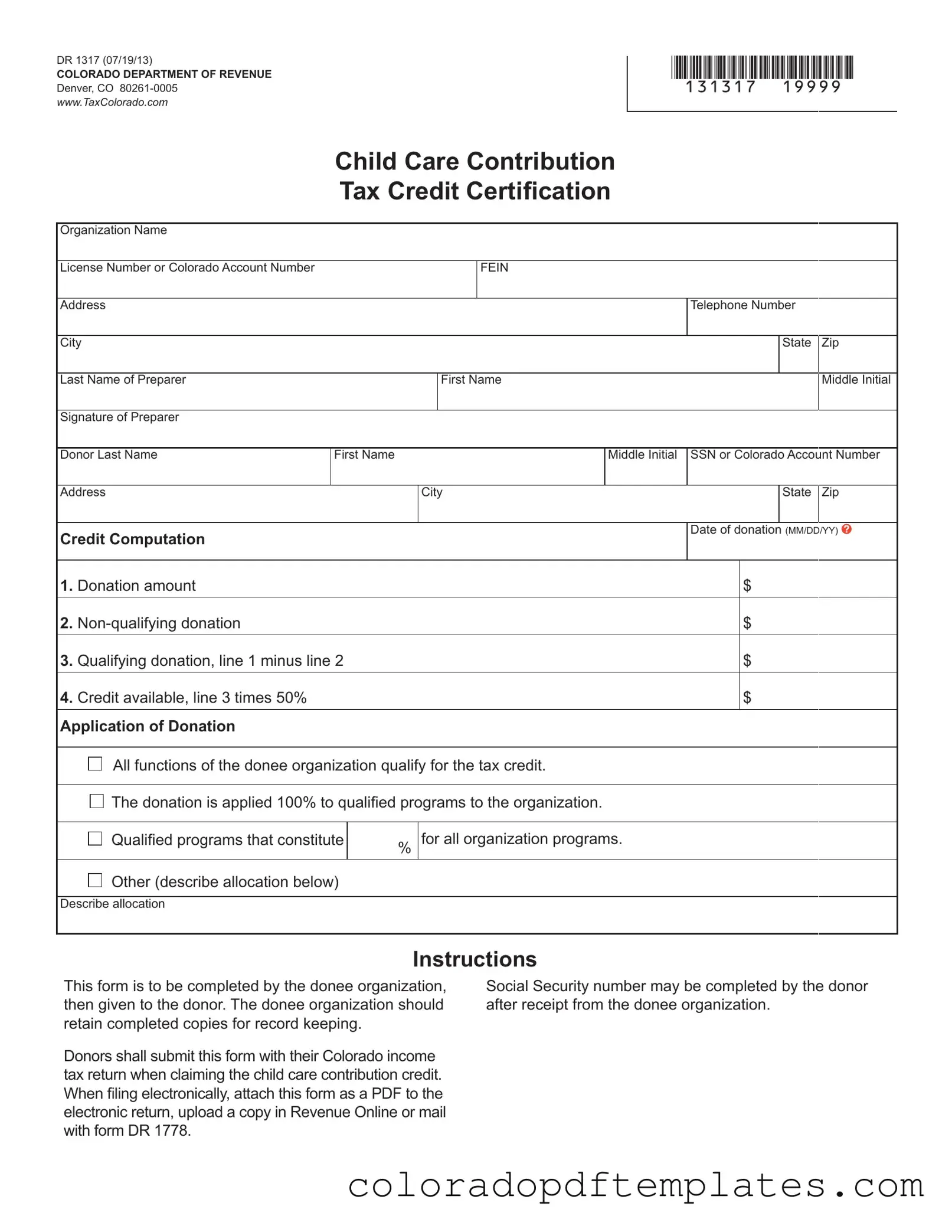Download Colorado Dr 1317 Form in PDF
The Colorado DR 1317 form is a certification used to claim the Child Care Contribution Tax Credit. This form must be completed by the donee organization and provided to the donor to facilitate the tax credit application process. Donors are required to submit the completed form with their Colorado income tax return when claiming the credit.
Make This Colorado Dr 1317 Online
